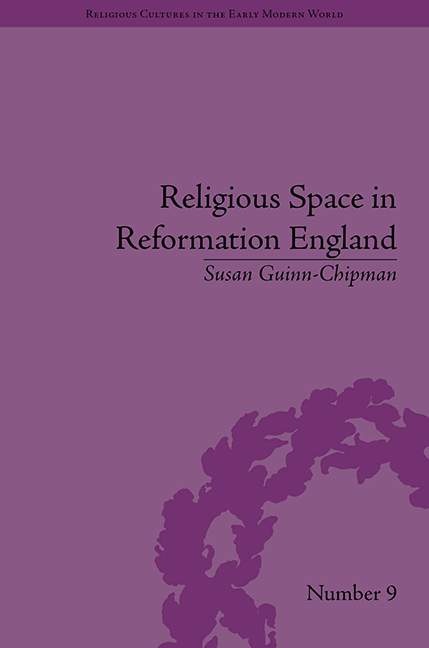Book contents
- Frontmatter
- CONTENTS
- Acknowledgements
- List of Figures
- Introduction
- 1 Dissolution and Adaptation: Religious Space in Henrician England
- 2 Radicalization and Response: Religious Space in Late Henrician and Edwardian England
- 3 Reframing the Parish Church in Marian and Elizabethan England: Cultural Adaptation in the Later Sixteenth Century
- 4 Contesting Religious Space: Alteration and Reaction in Stuart England
- Epilogue: The Persistence of Memory in Early Modern England: Mapping the Past
- Notes
- Works Cited
- Index
2 - Radicalization and Response: Religious Space in Late Henrician and Edwardian England
- Frontmatter
- CONTENTS
- Acknowledgements
- List of Figures
- Introduction
- 1 Dissolution and Adaptation: Religious Space in Henrician England
- 2 Radicalization and Response: Religious Space in Late Henrician and Edwardian England
- 3 Reframing the Parish Church in Marian and Elizabethan England: Cultural Adaptation in the Later Sixteenth Century
- 4 Contesting Religious Space: Alteration and Reaction in Stuart England
- Epilogue: The Persistence of Memory in Early Modern England: Mapping the Past
- Notes
- Works Cited
- Index
Summary
The suppression of the chantries, like the dissolution of the monasteries, would have been difficult to justify from a theological standpoint had the Crown not challenged the doctrine of purgatory. As intercessory institutions, each had offered prayers for the souls of founders and patrons. Writing on 10 February 1536 to Emperor Charles V, diplomatic ambassador Eustace Chapuys noted that the recent Henrician legislation pertaining to the doctrine had been the ‘newest and most strange to the people’, in particular to those whose ancestors had left ‘foundations to the memory of posterity’. Although some English men and women had come to question the need for prayers for the souls of the deceased, founders of chantries and their descendants would have anticipated that their souls remain the focus of intercessory prayers long after their deaths. Chapuys speculated on Henry's role in the propaganda campaign against intercessory prayer, suggesting that ‘the great object of the King is to persuade the people that there is no purgatory, in order afterwards to seize all the ecclesiastical endowments’. No matter the injustice, Chapuys continued, ‘there is not one who dare contradict the King without other support’. This challenge to the doctrine of purgatory would set the stage for the suppression of the chantries in the following decade.
This chapter considers lower-level resistance to the suppression of chantries and similar, smaller intercessory foundations that made up so much of the late medieval parish church.
- Type
- Chapter
- Information
- Religious Space in Reformation EnglandContesting the Past, pp. 41 - 72Publisher: Pickering & ChattoFirst published in: 2014



